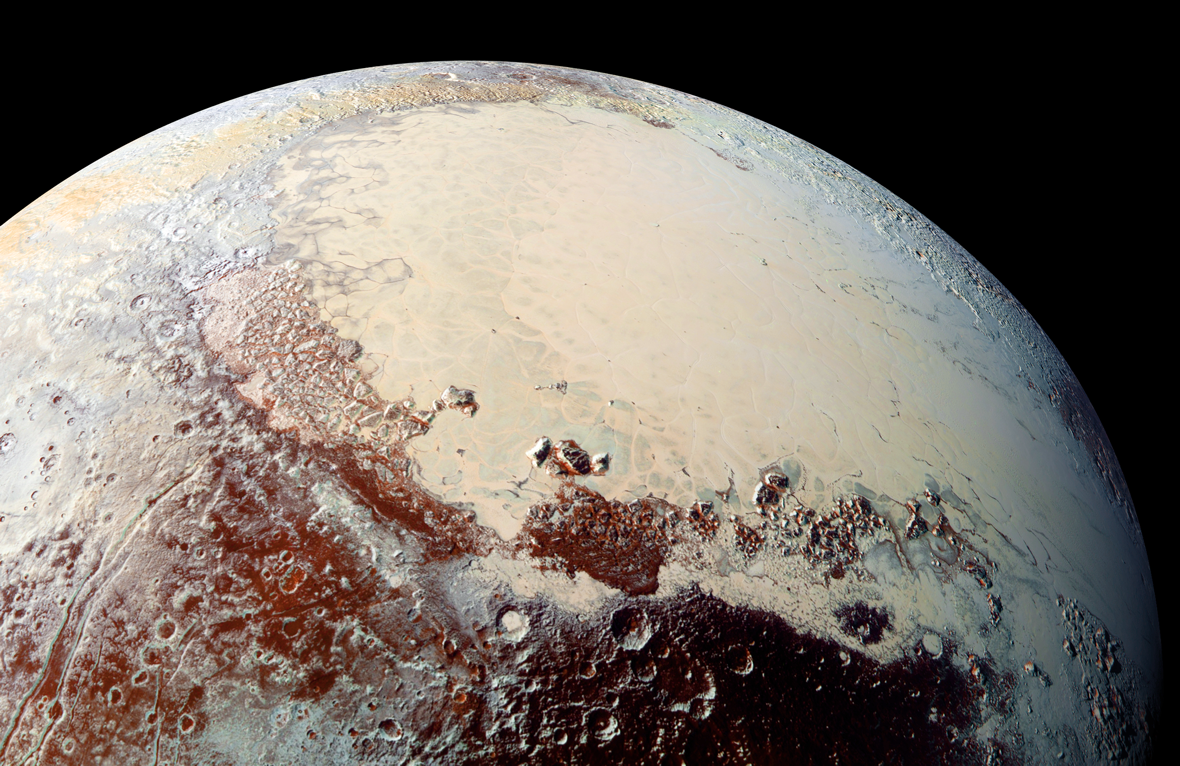
It has been three months since the historic close flyby of Pluto by New Horizons, and new discoveries have been coming in quickly about this previously little-known world. The first paper detailing these results so far, “The Pluto System: Initial Results from its Exploration by New Horizons,” has now been published in Science. New Horizons has revealed Pluto and its moons to be more complex and geologically active than ever thought.
The new paper is the cover story in Science for Oct. 16, 2015.
“The New Horizons mission completes our initial reconnaissance of the Solar System, giving humanity our first look at this fascinating world and its system of moons,” said Jim Green, director of planetary science at NASA Headquarters in Washington. “New Horizons is not only writing the textbook on the Pluto system, it’s serving to inspire current and future generations to keep exploring – to keep searching for what’s beyond the next hill.”
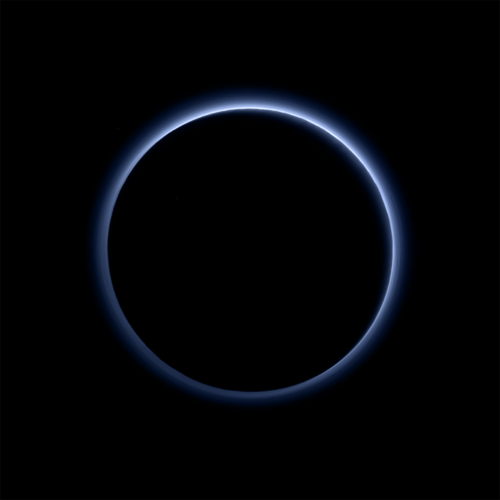
New Horizons passed Pluto on July 14, 2015, at a distance of only 7,750 miles (12,500 kilometers), providing the first close-up view of a place which until now had only been a fuzzy point of light in the best images taken from Earth. What were once just blurry hints of surface features are now icy mountains, canyons, and glaciers on this frigid world.
“The Pluto system surprised us in many ways, most notably teaching us that small planets can remain active billions of years after their formation,” said Principal Investigator Alan Stern, with the Southwest Research Institute (SwRI) in Boulder, Colo. “We were also taught important lessons by the degree of geological complexity that both Pluto and its large moon Charon display.”
Being so small and so far from the Sun, it was surprising to see Pluto now as an active place. Some of the mountains seen are as tall or taller than some mountains on Earth, and the large regions of smoother, glacier-like ices are similar to what is seen in the polar areas on Earth. A key feature seen is the “heart,” also known as Sputnik Planum, a roughly heart-shaped and relatively flat area of ices which seem to slowly flow in much the same way that glaciers do on Earth. On Pluto, however, the ices are composed of nitrogen, methane, and carbon monoxide; similar in appearance but much different in composition. The mountains, however, are massive blocks of water ice, which is as hard as rock in the extreme cold. The bedrock and crust is also rich in water ice. Large areas of Pluto don’t have exposed water ice, but rather a mix of the other ices, which occur naturally in the extreme freezing temperatures of Pluto’s surface.
“Large expanses of Pluto don’t show exposed water ice,” said science team member Jason Cook, of SwRI, “because it’s apparently masked by other, more volatile ices across most of the planet. Understanding why water appears exactly where it does, and not in other places, is a challenge that we are digging into.”
From the new paper:
“For Pluto, the rugged mountains and undulating terrain in and around TR require geological processes to have deformed and disrupted Pluto’s water ice–rich bedrock. Some of the processes operating on Pluto appear to have operated geologically recently, including those that involve the water ice–rich bedrock as well as the more volatile, and presumably more easily mobilized, ices of SP and elsewhere. This raises questions of how such processes were powered so long after the formation of the Pluto system.”
Since Pluto is only one of many smaller bodies in the Kuiper Belt, it is now thought that other relatively large Kuiper Belt objects (similar in size to Pluto), such as Eris, Makemake, and Haumea, may also show evidence of similar geological activity.
The flyby showed that there are always surprises waiting to be found; before the encounter, it was theorized that Neptune’s moon Triton would be similar to Pluto, since it is thought to be a former Kuiper Belt object also, before being caught by Neptune’s gravity and becoming a moon. But now, scientists have seen distinct differences between the two worlds.
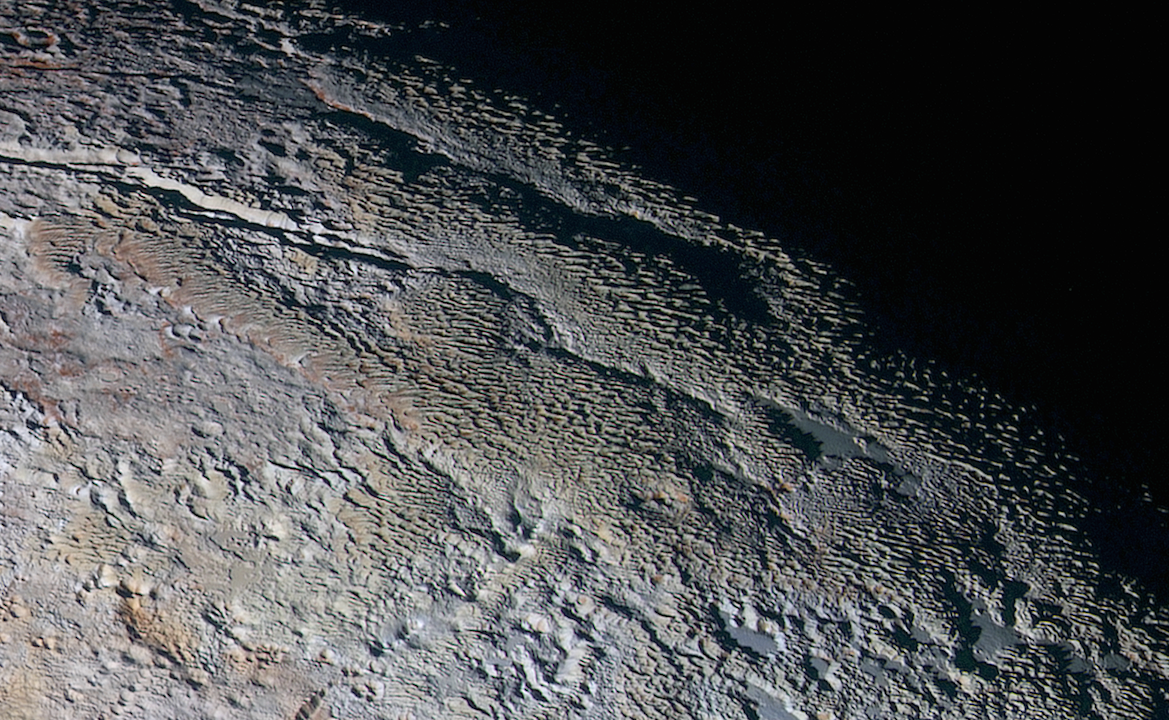
One of the most stunning images sent back was the view of Pluto backlit by the Sun, after closest approach. The thin atmosphere of Pluto is seen as a beautiful thin blue ring surrounding the dwarf planet, not too different from similar views of Earth. A larger version of the “blue sky” image can be seen here.
“That striking blue tint tells us about the size and composition of the haze particles,” said science team researcher Carly Howett, also of SwRI. “A blue sky often results from scattering of sunlight by very small particles. On Earth, those particles are very tiny nitrogen molecules. On Pluto they appear to be larger – but still relatively small – soot-like particles we call tholins.”
The surface also features a range of subtle color differences, and New Horizons also founded patches of red water ice. Pluto has turned out to be a very colorful place.
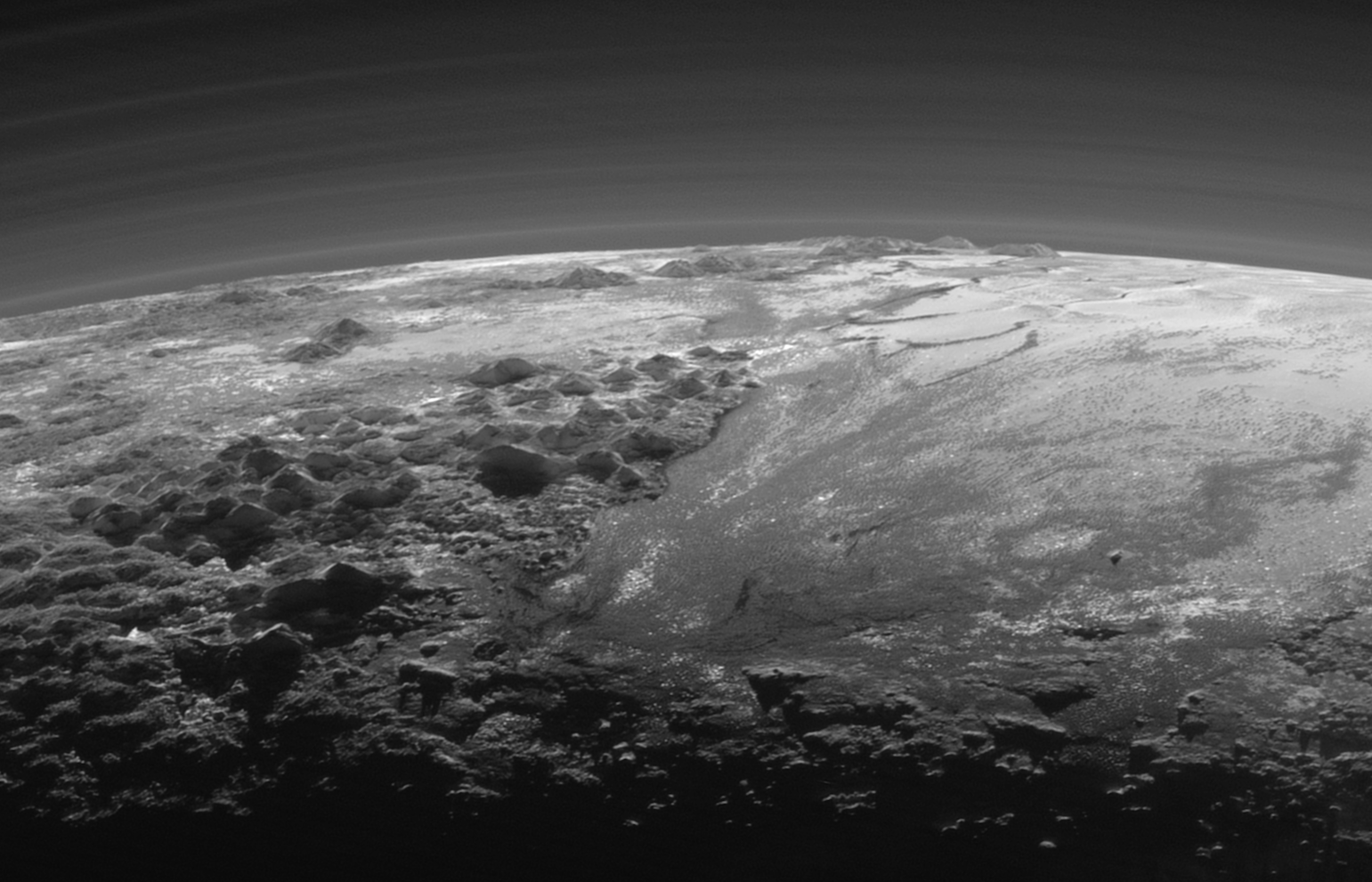
In other regions, there is a weird-looking type of terrain called “snakeskin,” a rippled mix of blue-grey ridges and other reddish material. How it formed is still unknown, but it is one more piece of a fascinating puzzle regarding the geological history of Pluto.
It is also speculated that Pluto may have nitrogen geysers, similar to those seen on Triton, but as of yet none have been spotted.
Pluto’s largest moon Charon is also full of surprises, with huge canyons, a “mountain in a moat,” and reddish material covering its north pole. It has also been theorized that this moon may have had a subsurface ocean of water, similar perhaps to Europa and Enceladus. The large cracks and other geological formations found suggest that may have been the case. If so, could that ocean still exist today? What about Pluto itself?
As of now, only about 10 percent of the data gathered by New Horizons during the flyby has been returned to Earth. The rest will be sent back for almost another year. The information should help scientists understand some of the mysteries of Pluto, such as how its thin nitrogen atmosphere is replenished and whether it “shares” that atmosphere with Charon, as has been theorized. An intriguing theory is that the nitrogen in the atmosphere comes from cryovolcanism, a sort of cold version of volcanism on Earth, where ice and gasses are released instead of hot lava. The new knowledge about Pluto and its moons should also provide clues about the many other objects in the Kuiper Belt, a region of the Solar System still unexplored until now. What else is waiting to be discovered?
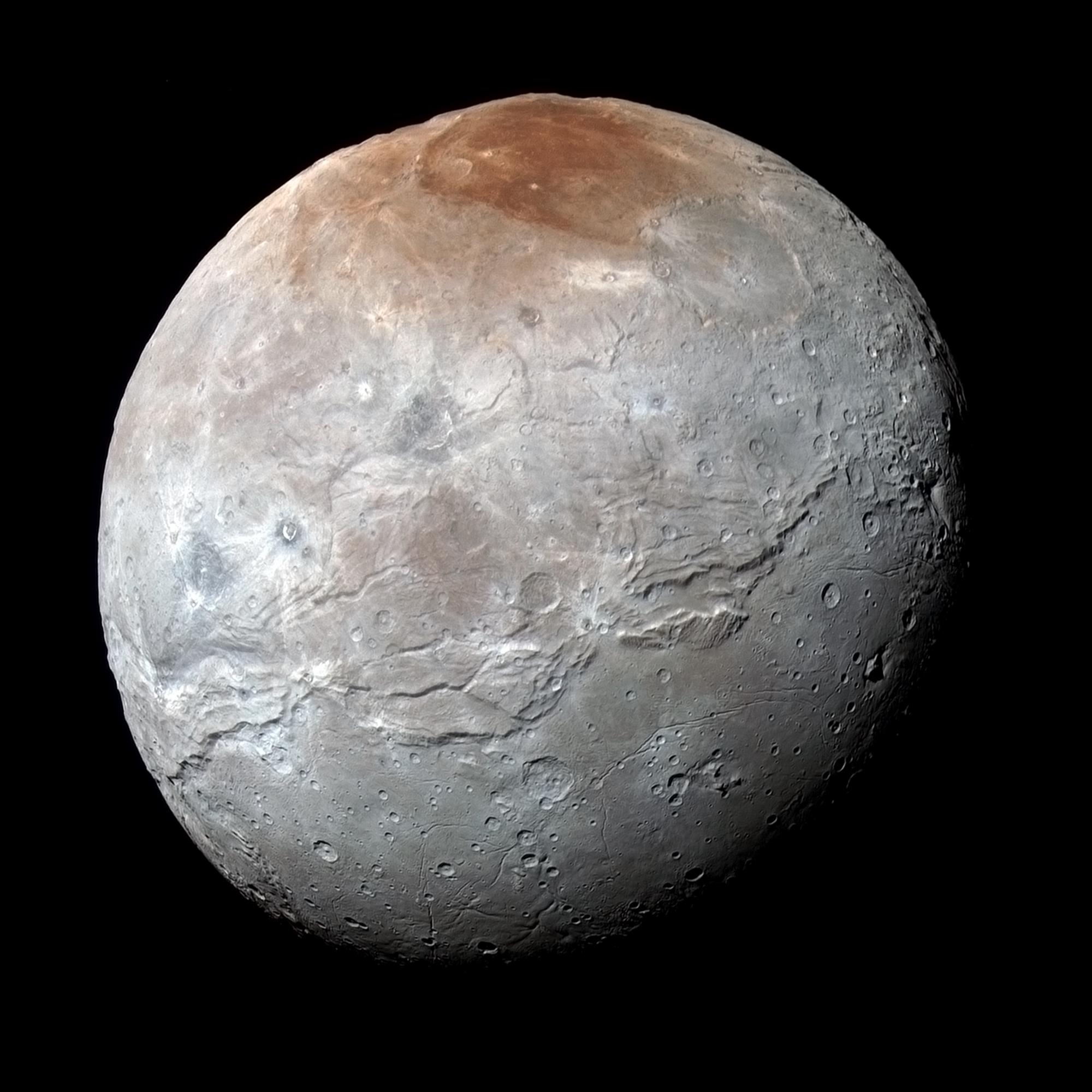
As the new paper concludes:
“The New Horizons encounter revealed that Pluto displays a surprisingly wide variety of geological landforms, including those resulting from glaciological and surface-atmosphere interactions as well as impact, tectonic, possible cryovolcanic, and mass-wasting processes. This suggests that other small planets of the Kuiper Belt, such as Eris, Makemake, and Haumea, could express similarly complex histories that rival those of terrestrial planets. Pluto’s diverse surface geology and long-term activity also raise fundamental questions about how it has remained active many billions of years after its formation.”
The New Horizons spacecraft is currently 3.1 billion miles (5 billion kilometers) from Earth. On Jan. 1, 2019, New Horizons will reach its next target in the Kuiper Belt, the tiny wordlet 2014 MU69.
New Horizons is part of NASA’s New Frontiers Program, managed by the agency’s Marshall Space Flight Center in Huntsville, Ala. The Johns Hopkins University Applied Physics Laboratory, Laurel, Md., designed, built, and operates the New Horizons spacecraft and manages the mission for NASA’s Science Mission Directorate. SwRI leads the science mission, payload operations, and encounter science planning.
Follow our New Horizons mission page for regular updates.
Want to keep up-to-date with all things space? Be sure to “Like” AmericaSpace on Facebook and follow us on Twitter: @AmericaSpace
Missions » New Horizons »



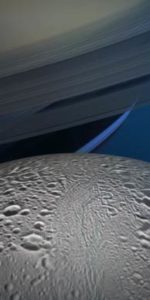

Paul,
Interesting article…does any of this lead one to think that Pluto will be changed from Dwarf Planet status to full planet?
“The New Horizons encounter revealed that Pluto displays a surprisingly wide variety of geological landforms, including those resulting from glaciological and surface-atmosphere interactions as well as impact, tectonic, possible cryovolcanic, and mass-wasting processes. This suggests that other small planets of the Kuiper Belt, such as Eris, Makemake, and Haumea, could express similarly complex histories that rival those of terrestrial planets. Pluto’s diverse surface geology and long-term activity also raise fundamental questions about how it has remained active many billions of years after its formation.”
The word “small” was used instead of ‘dwarf’…
And there are five moons orbiting Pluto.
Both Mercury and Venus lack moons. Earth only has the Moon, and Mars has two moons.
A planet with five Moons doesn’t really sound like a ‘dwarf’ to me.
Using the term “Dwarf Planet” to describe Ceres might make sense, but even with that sphere the phrase ‘small planet’ might be more useful.
Using the term “Dwarf” for a sphere like Pluto that has four more moons than the sphere we live on sounds like many astronomers have inferiority complexes and need to diminish the importance of a “rival” in order to inflate the galactic importance of the small world we live on by putting it in the same mental category as the planet Jupiter.
I like the song, written by Richard and Robert Sherman, that Walt Disney gave to everyone on Earth, ‘It’s a Small World’. Yep, that song describes the sphere we live on, not the planet Pluto.
Having many or not having any moons does not make something any more or less of a planet. There are asteroids with moons.
James: you have articulated THE best rationale for returning Pluto to legitimate planeyary status. Whether the adjective us3d is “small” or “dwarf” does not diminsh its scientific importance in the family of planets.